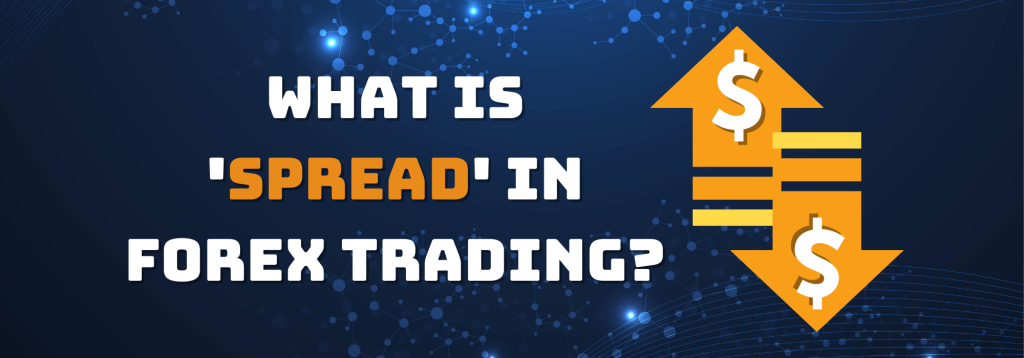Table of Contents

Introduction
In Forex trading, the ‘spread’ refers to the difference between the bid (sell) and ask (buy) price of a currency pair. It’s a crucial factor in trading costs and strategies, directly affecting a trader’s profitability in the dynamic Forex market.
What is Spread in Forex Trading?
Forex trading in the foreign exchange market can be daunting for both beginners and experienced traders. It’s advisable to have a basic understanding of trading terminology before starting. A common question among new traders is, “What is ‘Spread’ in Forex Trading?” or “What is the difference between the bid and ask price?” This guide will clarify what spread is and how it influences your trades in the forex market.
The spread in forex trading is the difference between the bid price and the ask price. The bid price is the rate at which you can sell a currency, while the ask price is the rate at which you can buy a currency. The spread is typically measured in pips, which are the smallest change units in a currency pair. For instance, if the EUR/USD currency pair has a bid price of 1.10 and an ask price of 1.11, the spread would be one pip.
Why Do You Need to Know About Spread?
Understanding the forex trading spread is crucial for forex traders. It represents the difference between the “bid” and “ask” prices of a currency pair. This spread can be either positive or negative. A positive spread means the broker charges more than the buy-sell price, while a negative spread indicates the broker charges less. This aspect of forex trading can be both risky and exciting, as traders can either make significant profits or incur substantial losses due to the spread. It is vital for forex traders to be aware of the spread and its impact on their trade pricing. Spread is also known as the bid-ask spread, denoting the difference between the buying and selling prices. Further details about Bid and Ask prices can be found here.
Different types of Spread in Forex Trading
There are various types of spreads in forex trading. Let’s examine each type and its impact on your trades.
Interactive Spread: The interactive spread can be either positive or negative. A positive spread means the broker charges more than the buy-sell rate, whereas a negative spread indicates a lower charge by the broker. In both cases, the FX broker makes a profit.
Negotiated Spread: This is the most common type of spread in forex trading, often referred to as the “negotiated rate.” Here, the broker and client collaborate to determine the price for the trade.
Risk and Reward of Forex Trading with Spread
Now, let’s discuss the risk and reward associated with forex trading and spread.
Risk of Forex Trading: Forex trading is a highly risky investment form, characterized by high risk and high potential reward. Traders can earn substantial profits but also face significant losses, largely influenced by the spread.
Reward of Forex Trading: Forex trading is unique in offering a high-risk, high-reward investment opportunity. The greatest reward for forex traders stems from the potential to earn substantial profits, mainly driven by the spread.
Conclusion
Are you prepared to venture into the thrilling and challenging realm of forex trading? Traders aim to make money by exchanging currencies in a market with over $5 trillion in daily transactions, making it the world’s largest. However, it’s essential to understand the spread, its impact on your trades, and the potential risks and rewards in the market.
To enhance your forex trading experience, consider subscribing to Fast Forex VPS. Our ultra-fast VPS provides minimal latency, giving you the competitive edge needed to excel in the forex market. Subscribe now and elevate your trading to new heights!
Seeking High-Speed VPS? Discover How Fast Forex VPS Can Revolutionize Your Trading Experience!
Subscribe now for as low as $9.39/month!
